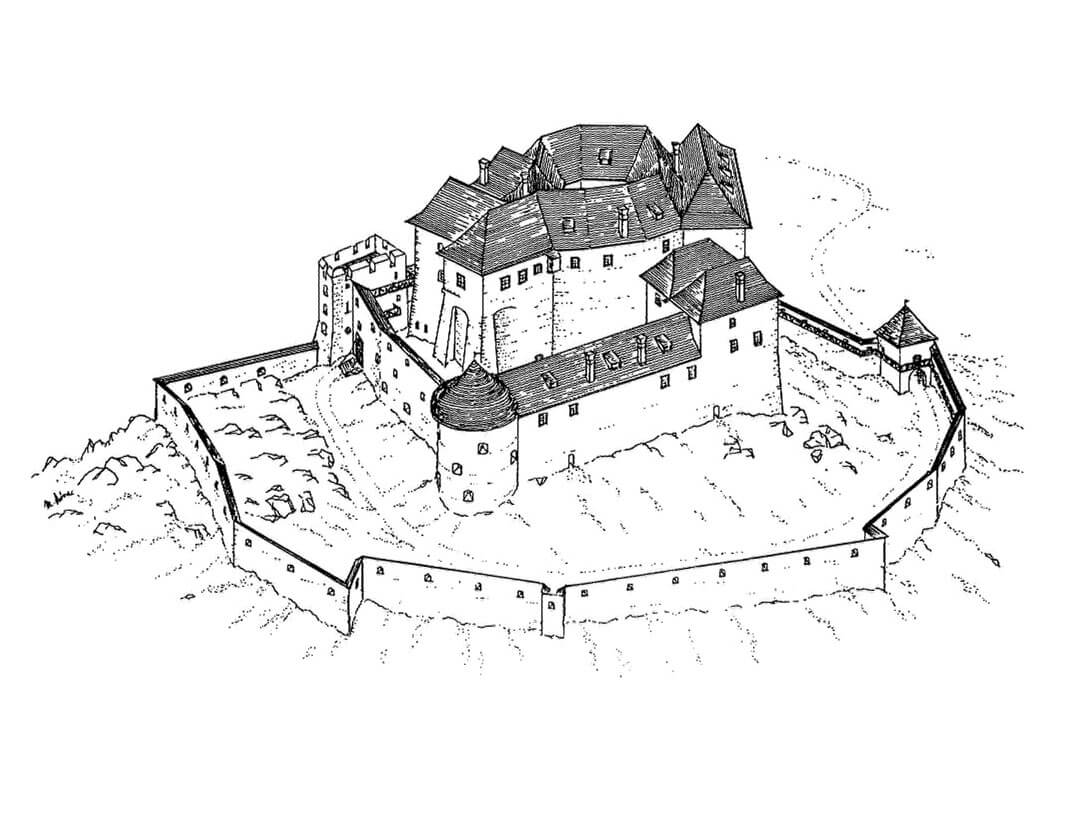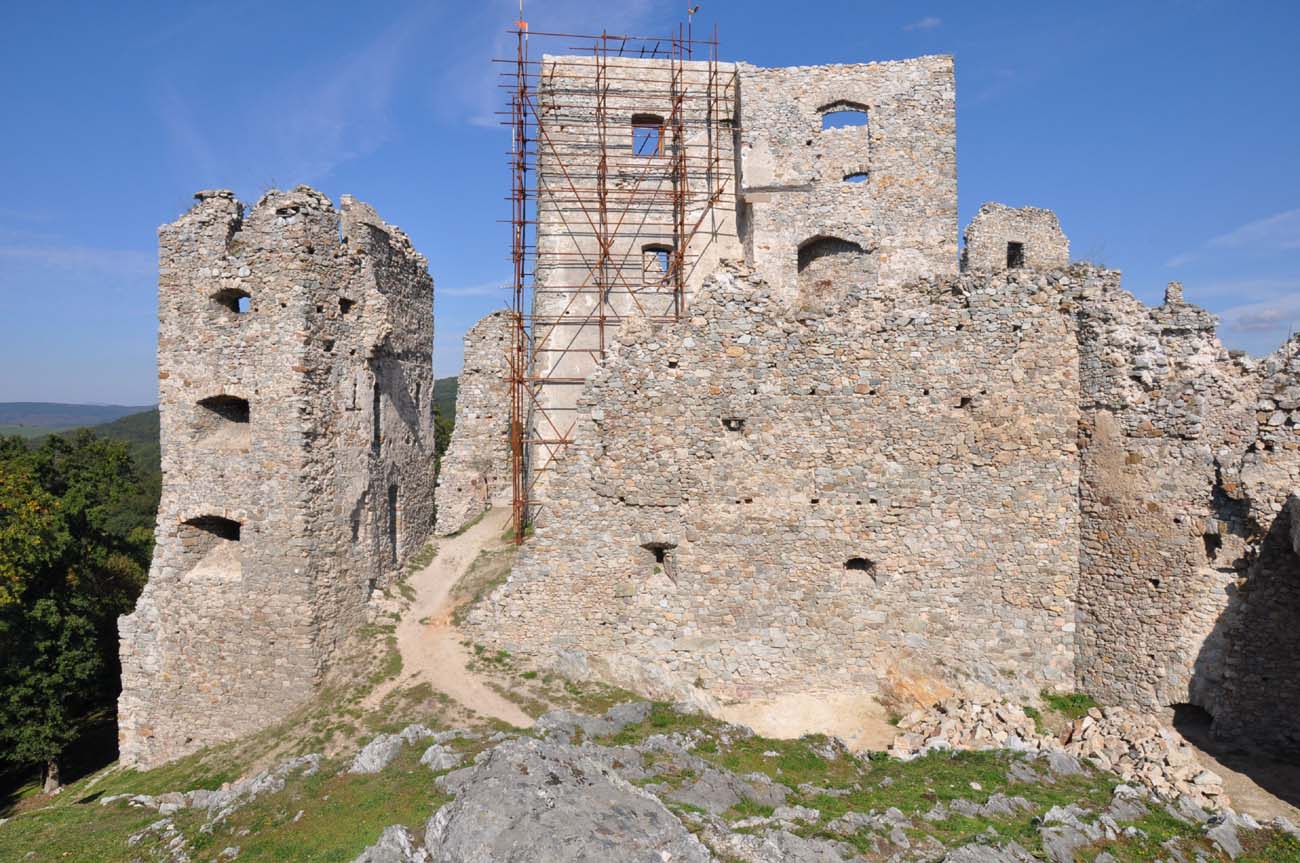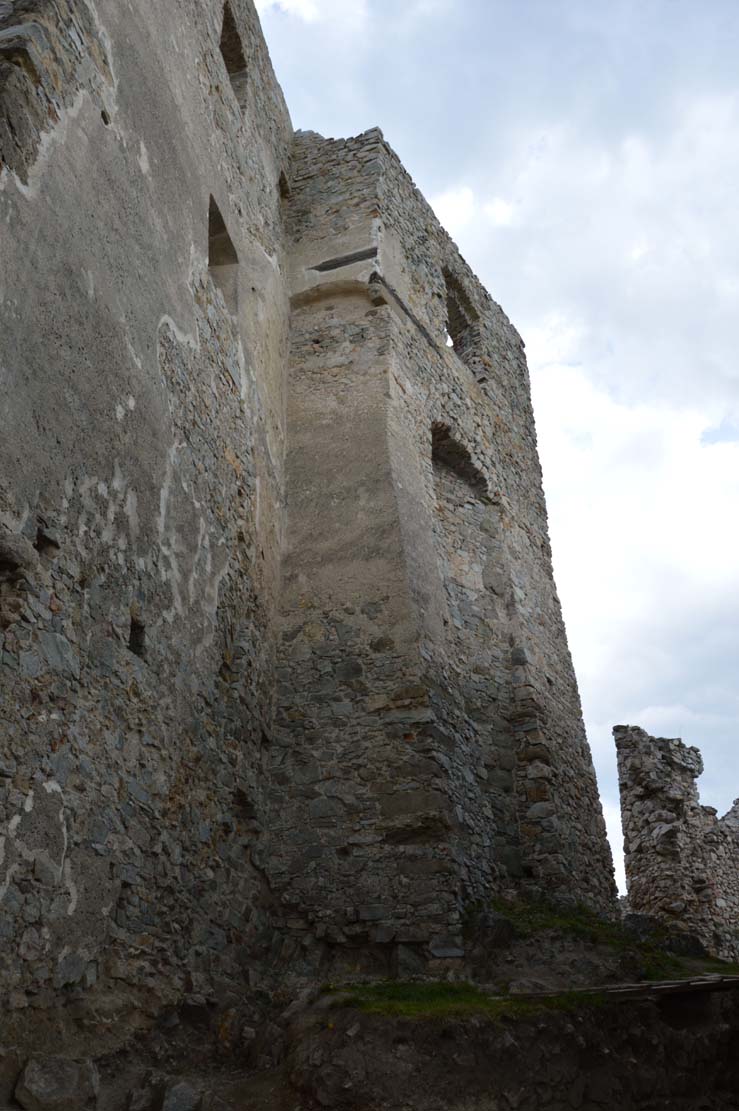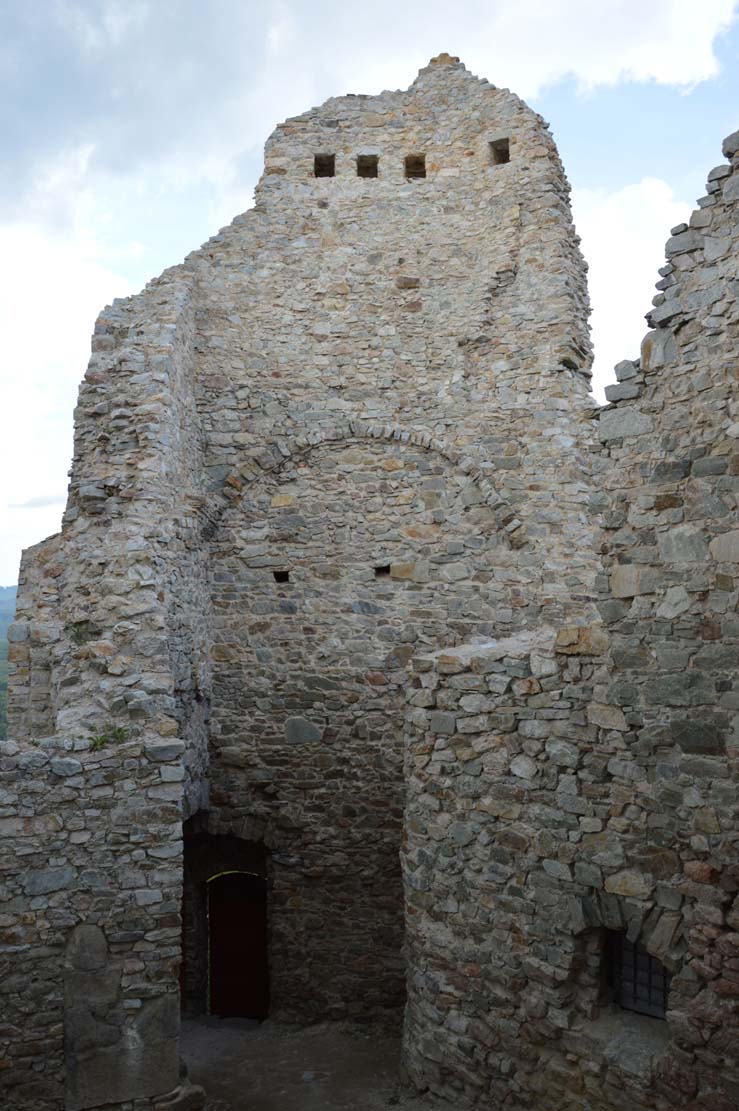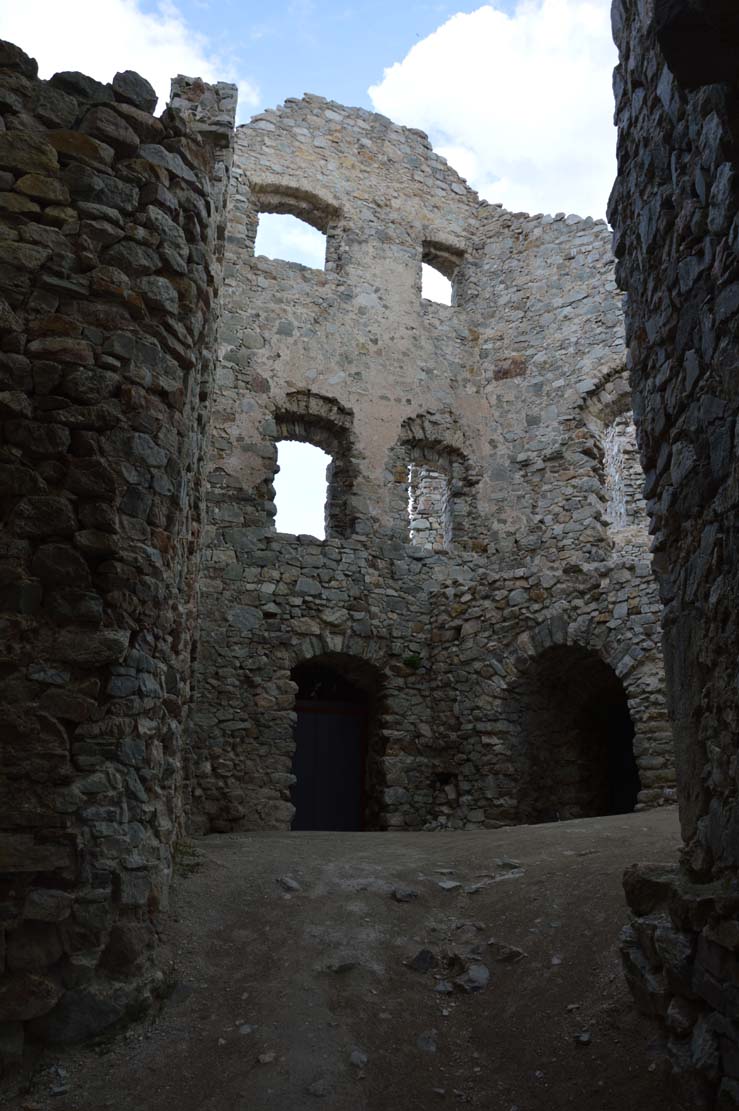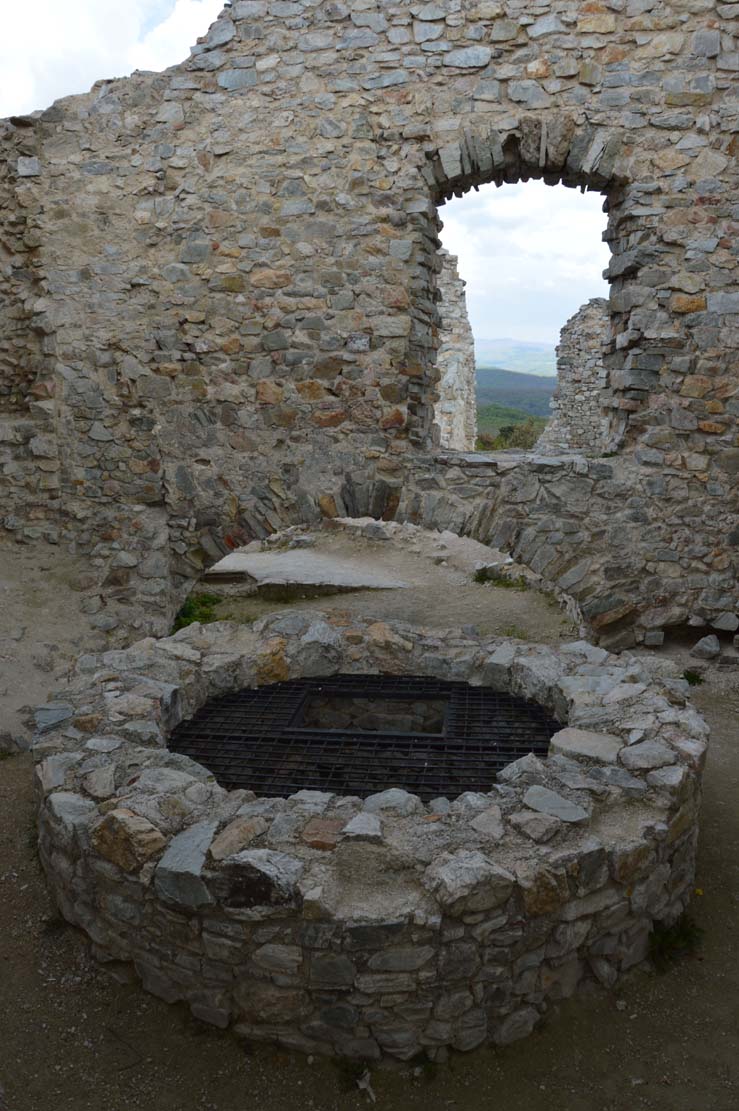History
The castle was probably built by members of the Csák family, at the latest at the end of the 80s of the 13th century, in order to secure the southern border of their dominion. In historical sources, the castle was mentioned for the first time in 1316. The castellan and relative of Máté Csák, Ladislav of Hrušov was recorded at that time. After the death of Máté Csák and the fall of his rule in 1321, the castle passed into royal hands, and since 1369 changed owners many times. It belonged, among others to the archbishop of Esztergom, and many noble families, among others Levice, Perenyi, Bebek and Zapolya. In the mid-sixteenth century, being in the hands of Juraj and Tomáš of Topoľčianok, it was rebuilt in the spirit of the Renaissance, becoming both a representative and defensive object. The last construction changes were introduced by Ladislav Rákoczi, assuming extensive outer baileys on the southern and eastern sides. The end of the castle brought an anti-Habsburg uprising. In 1708 it was conquered and destroyed by the imperial army. It was saved from the total ruin by conservation in 1928-1930.
Architecture
The original castle, built on a low hill, was limited to an oval wall measuring approximately 26×22 meters, creating a small courtyard with buildings lined up to its inner side. The gate was placed on the west side in a small bent of the wall, and the road to the castle led from the north-east, with a spiral surrounding the whole complex. Thus, the castle was initially a towerless building with a defense limited to the perimeter wall.
At the beginning of the 14th century, on the south-western side, a rounded tower was erected, with the spur on the side of the rocky crest pointing towards the access road. The tower was located in front of the perimeter wall. The gate was preceded by a small foregate with an ogival entry portal. Subsequently, buildings were built on the outer ward, which was surrounded by a wall and a corner, quadrangular tower. At the end of the fifteenth century, the eastern part of the castle received a semi-round, open from the inside tower.
In the 16th and 17th centuries, buildings of outer ward became a middle castle, while the youngest lower castle was created to the south and east of it. At that time, the upper castle was also rebuilt. Its buildings were unified and devoid of defensive values. The upper part of the tower was demolished, while its lower part was incorporated into a new building. On the north-east and north-west side new residential buildings were built, due to the lack of space in the courtyard extended beyond the perimeter of the main defense circuit. In the 16th century, in the southern corner of the outer ward’s fortifications (middle castle), an oval bastion was built, while in the following century, a small half-round tower from the 15th century was demolished, erecting an elongated building in its place.
Current state
The castle has been preserved in the form of a legible ruin, however, it is worth remembering that before the destruction the castle underwent significant early modern transformations. Currently, the ruins are organized and restored thanks to the “Association of the medieval architectural heritage of the Nitra – Leustach region”. Admission to the castle is free, but after the completion of works, paid tickets may be introduced.
bibliography:
Bóna M., Plaček M., Encyklopedie slovenských hradů, Praha 2007.
Wasielewski A., Zamki i zamczyska Słowacji, Białystok 2008.




